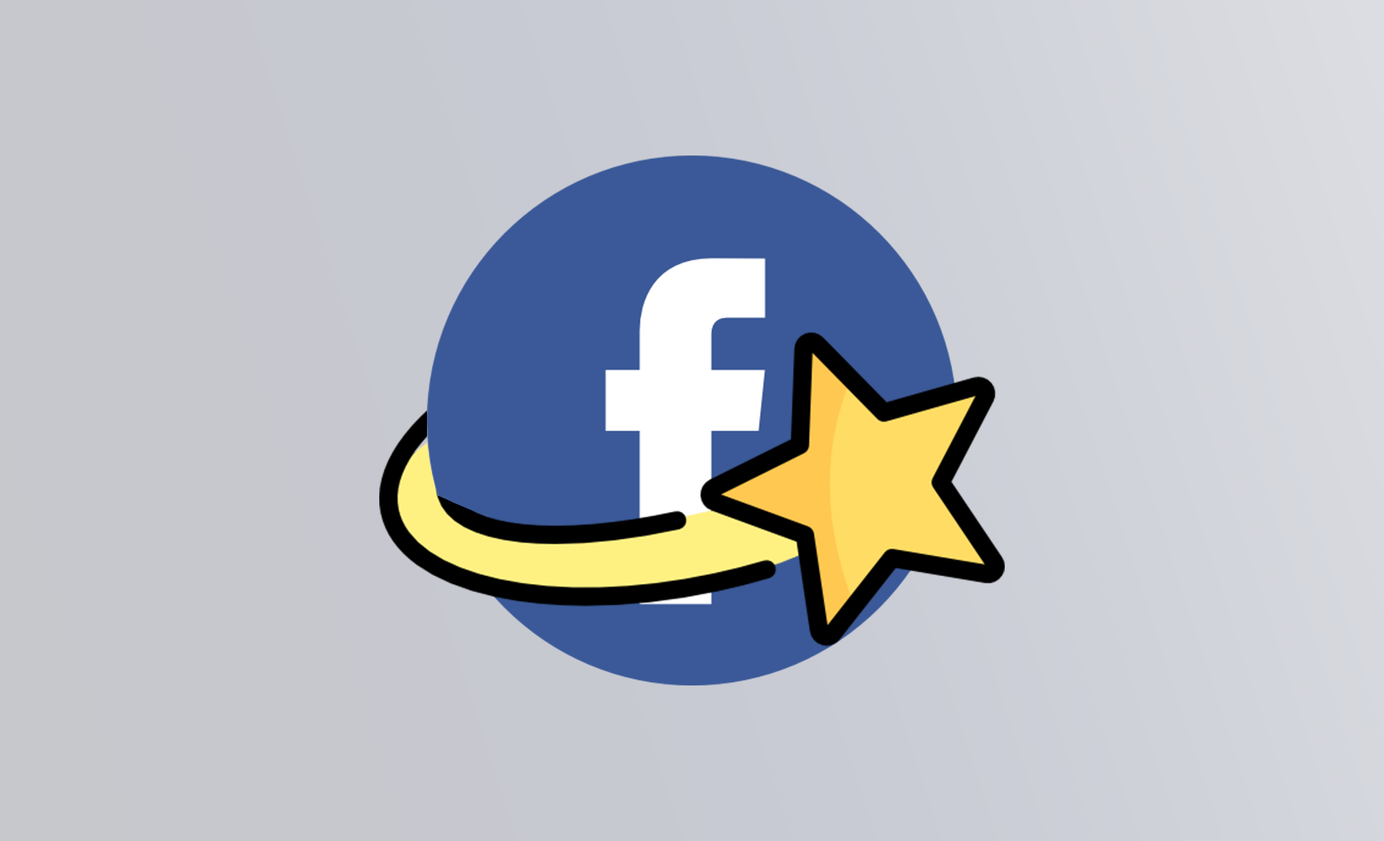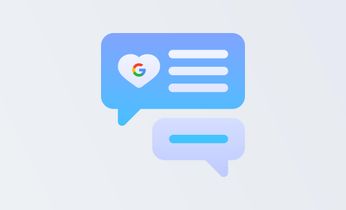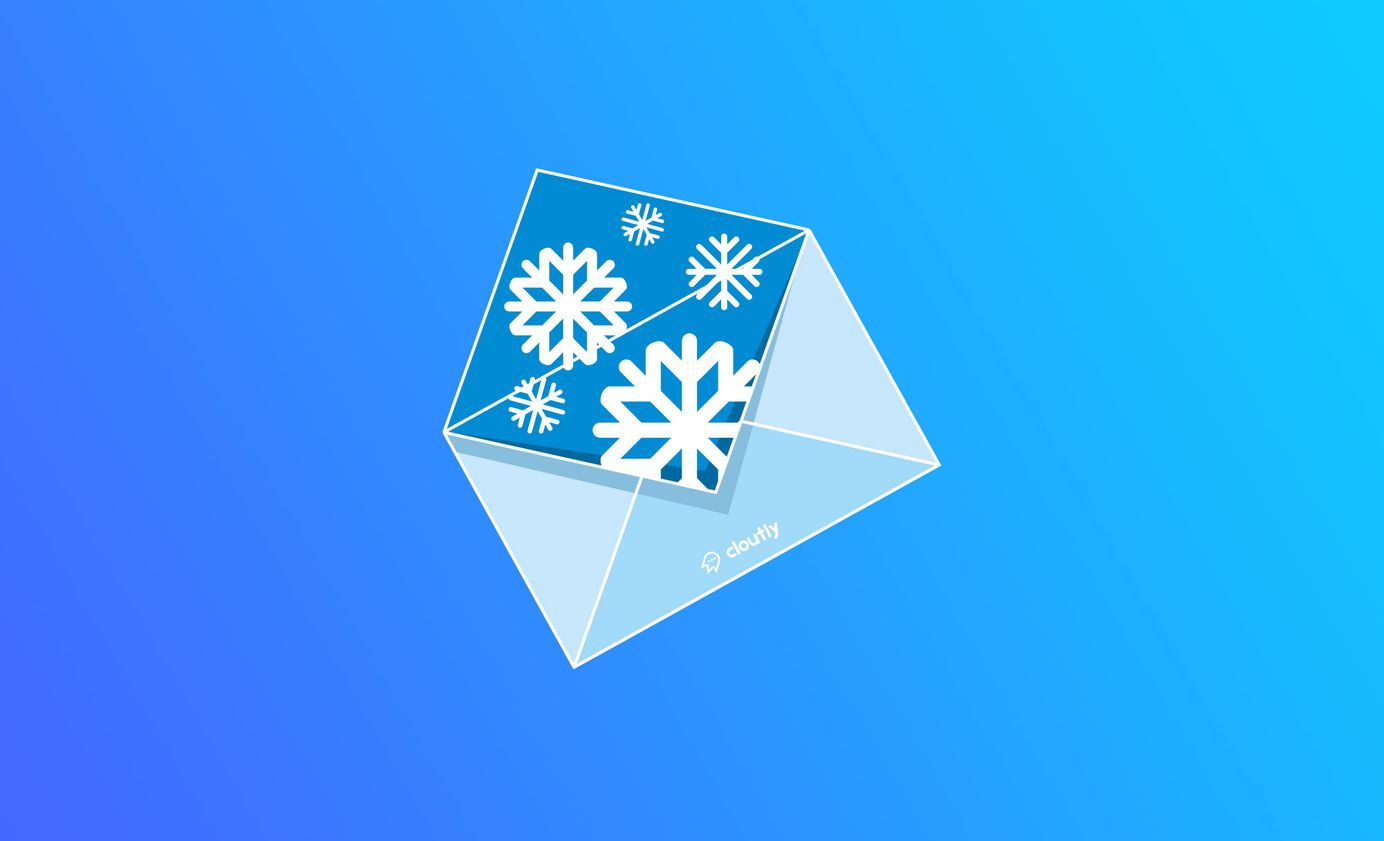
How this cold email template landed 20+ B2B partnerships
Discover the exact B2B cold email processes - the tools, the lists, the copy, the psychology - that won us our first 20 agency partners.
Table of Contents
B2B cold email gets a bad rap. I get hundreds of outreach emails every day, and for the most part, they suck. But they don't have to. After all, a customer is a prospect you just haven't met, and every customer has to find about you somehow.
Since Cloutly was a bootstrapped/self-funded startup, we didn't have the luxury of experimenting with paid ads or hiring a huge sales team; not just from a costs perspective, but from a development perspective as well. Our first few customers would give us huge insight into our shortcomings, and while yes, we might have won some business from paid ads, it would have hurt twice as bad if we'd paid for them just to churn due to a bug or feature gap. With so many unknowns, we started with the things that didn't scale: cold outreach and high-touch outbound sales.
That required mastering... the cold email.
And as you've guessed, it went well! Lemlist wrote a case study on the very campaign I'm about to walk you through, but in this blog, I'm going to delve a little deeper into the topic and dissect why it worked, what exactly went into the entire process - from building the list, to the exact cold email templates I used - and how you might replicate the results for your campaigns.
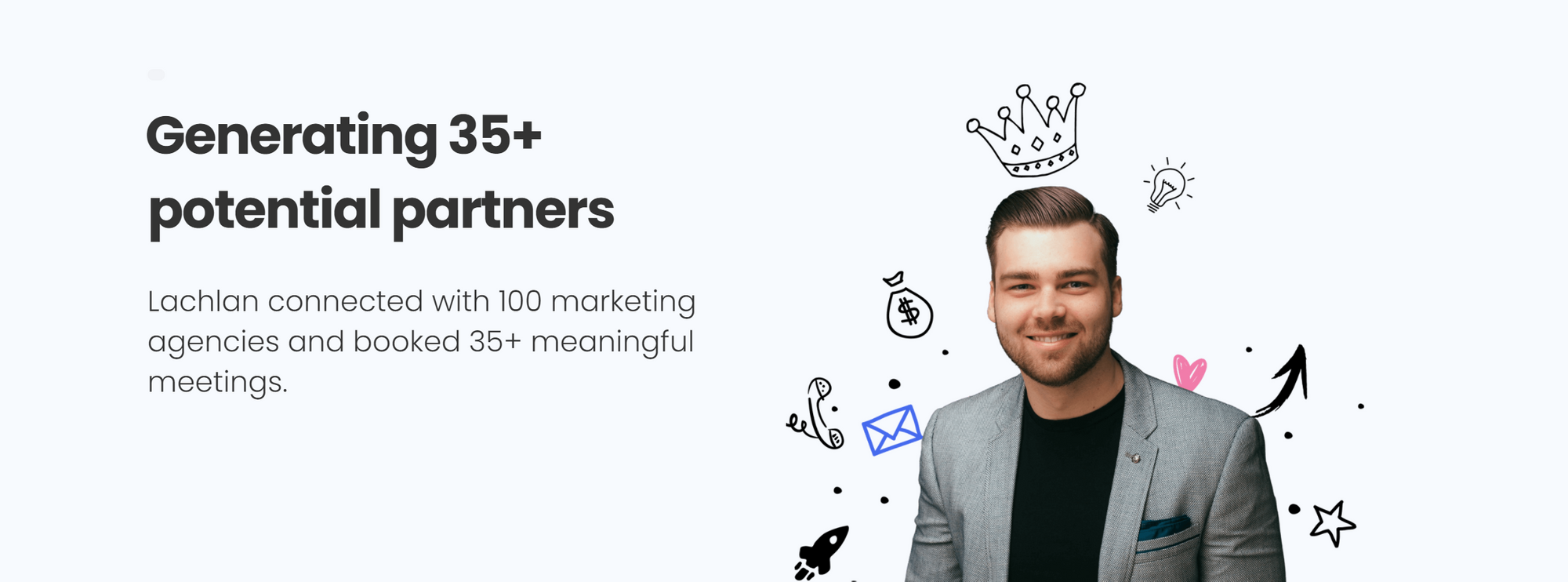
Does cold email actually work?
Yes, yes it does.
Firstly, there's an important shift that you, as the marketer or salesperson, need to understand. That is: the purpose of cold email is not to sell, it's to prospect. But with great power, comes great responsibility and before we dissect the cold email templates that won for us, let's start with the Laws of Cold Email.
Law #1 - you shall not spam.
Law #2 - your list shall be clean.
Law #3 - your ask shall be small.
Law #4 - your value shall be great.
Who cares, right? Well, if you're about to pull the trigger on a mass cold email to 100,000 people, stop. Not only is this going to hurt your brand (and your email sender reputation when your outreach email doesn't hit the inbox), but - there's an old adage in advertising - when you speak to everyone, you speak to no-one. Everyone is not your customer.
How our campaign got 94% opens and 42% replies
Cloutly is a SaaS company, so our launch strategy was to get it in the hands of marketers who deeply understood the problem we solved, who could see and communicate that value to their team very quickly.
Our target recipient for our first cold email campaign: marketing reps and agencies who might use Cloutly as a tool for their client campaigns to get more reviews and win sales using social proof. They had to be a decision-maker. That was our business development approach.
I cold emailed 122 marketing agencies and here's what happened:
- 94% open rate
- 42% response rate
- 30+ meetings booked
~$60 spent on software and contractors
Let's walk through it, step-by-step.
List of tools we used
- LinkedIn ($0 - for finding leads. You don't need Sales Navigator, but it helps)
- UpWork ($0.20c/lead - for hiring lead generators to enrich your data)
- Hunter.io ($0 - for finding emails that our UpWork contractors missed)
- Neverbounce (from $0.008c per email - checks and cleans your emails)
- Lemlist ($29/m - for cold email outreach - doubles as a CRM)
1. Building a cold email list
I used LinkedIn to identify our ideal leads and then copied their profile URLs into an Excel spreadsheet.
I paid a freelancer on UpWork $0.20 per lead to enrich my spreadsheet with all the other data I'd need, including: First Name, Last Name, Email, Company Name, Website.
Then, I uploaded my freshly compiled email list into Neverbounce to clean and validate the email addresses were reachable. This is important to do, as bounced emails (which you don't want) will hurt your sender reputation, resulting in more of your future emails landing in spam.
If you find a significant number of your emails are invalid or unknown, it's best to exclude them from your campaign until you can attain more accurate data.

2. Enriching the list and adding real personalisation (icebreakers)
I added a new column called "Icebreaker" and then went through one by one to add a personalised introductory sentence to each row. Yep, that's right. Roll your sleeves up. This involved opening each company's website, LinkedIn, looking through recent media, socials etc. and genuinely doing my homework. Each row took me roughly 8-12 minutes on average to create a compelling opener.
I knew we had good leads with genuine pain points because I'd picked them myself. Freelance lead generators can be a bit hit or miss, so do as much as you can yourself to ensure you're on target and not wasting your time (and your leads' time).

Here's an example of an icebreaker that did well:
Major Sin City vibes from your site. When you're not smokin' the competition at Adelaide's finest BBQ comps, I saw you were whipping up some pretty impressive digital campaigns. With that in mind, I thought this could be worth a look.
Here's another one, a little more straightforward:
Small world! I have a few friends at [CLIENT OF COMPANY]. Saw you did a lot of social activations and thought, with your experience, this could be worth a look.
Over the course of the list, I'd written 122 personalised icebreakers for this campaign.
Worth it?
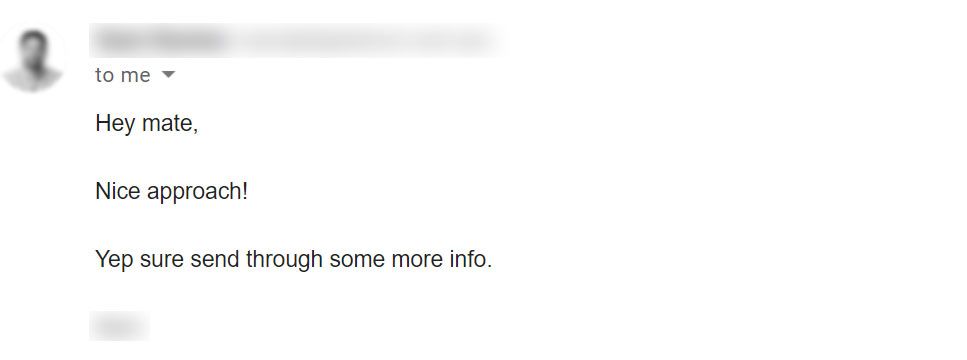


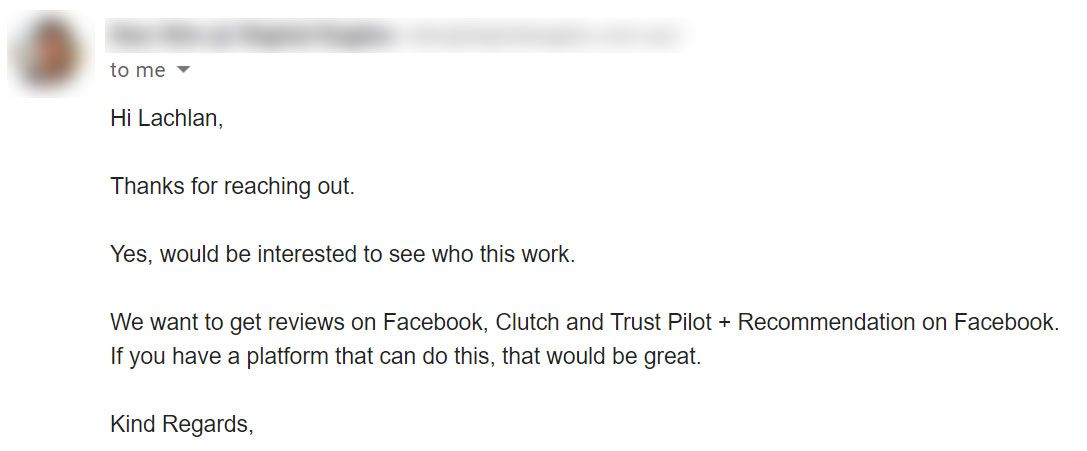
Hell yeah.
Why did these icebreakers work? They showed I cared about them, I'd done my homework and I genuinely thought they could benefit from Cloutly.
I also found that - in this case - using more casual language like "worth a look" as a trial close at the end of my icebreakers helped generate more replies than more direct approaches. This sort of language is obligation-free and disarms the prospect. More on this soon.
Of course, not everyone said 'Yes', but using this personalised approach even left a positive impression on the 'No' leads:

3. Our shockingly successful cold email campaign template
The secret to effective cold emails. Inside Lemlist, we settled on a 4-step cold email drip sequence. I'm going to give you the exact emails (the cold sales email template) I used to generate 94% opens and 42% replies over 122 contacts, and attempt to break down the psychology behind 'why' we saw these results.
Firstly, here's the outreach schedule. If the contact didn't reply/take action on Step 1, they progressed through to Step 2 and so on, until we could get them on a quick call or book a demo with the appropriate person into their calendar.
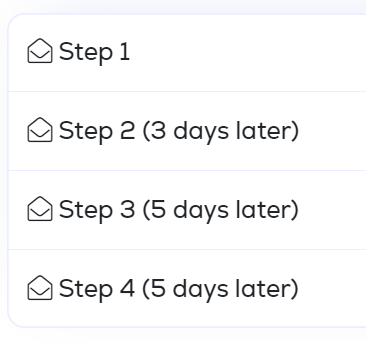
Step 1: The Opener
This email sets out to achieve 3 things: disarm and intrigue with a personalised icebreaker; succinctly convey fit and reason for outreach; identify relevant industry peers who the prospect would know to create a sense of likeness and FOMO.
Subject: Quick Question about {{Company}}
Hey {{firstName}},
Lachlan here. {{icebreaker}}.
Launched a new reviews tool for agencies and wanted to run it by you.
Think TrustPilot, Google, TripAdvisor, Facebook reviews etc all rolled into the one dashboard. As an agency, it allows you to offer your clients a new billable service, and for your clients, helps them get more 5-star reviews on any review site (plus much more).
Partnered with AGENCY 1 and AGENCY 2 recently. Would love for you to check it out, too.
Can I send through some more info?
Breaking it down
Mostly, this cold email follows the AIDA framework: Attention, Interest, Desire, Action. We discussed the icebreakers above (Attention), so let's turn our focus toward the rest of the copy.

Attention/Interest:
Launched a new reviews tool for agencies and wanted to run it by you.
In one sentence, we quickly identify what our product does and compound on the authenticity we've built with our icebreaker, by signalling we care about their opinion as an expert on the subject matter - 'wanted to run it by you'. This creates intrigue. You could also use this section to address a niggling pain point that your prospect's company faces.
Think TrustPilot, Google, TripAdvisor, Facebook reviews etc all rolled into the one dashboard. As an agency, it allows you to offer your clients a new billable service, and for your clients, helps them get more 5-star reviews on any review site (plus much more).
By contextualising ourselves to products and tools agencies are already familiar with, we're able to prime our leads with information that provides a shortcut to understanding our value proposition. We show them what's in it for them, not what's in it for us.
Desire:
Partnered with AGENCY 1 and AGENCY 2 recently. Would love for you to check it out, too.
Cloutly is a platform built to leverage social proof, and in this line, we identify other agencies (not necessarily a competitor) - in the same space as our target prospect - who we've worked with, to provide credibility.
Action:
Can I send through some more info?
This has worked very well for us and harkens back to our 3rd Law of Cold Email: your ask shall be small. The goal of cold outreach is not to drive a sale, but to identify a prospect. Many marketers and salespeople make the mistake of asking for too much, too soon. In our email, we only ask permission to send more information. It's a one-sentence pitch.
This achieves three things:
1. It actually gets people to reply to our emails (which is important for sender reputation).
2. It identifies people as prospects.
3. It provides a low-friction next-step.
Most people don't want to jump on a call straight away, so adding this softer opt-in allows us to move them through marketing qualification with permission. A key to B2B sales: keep your message concisely targeted in the right direction, without annoying your prospect out of the gate with a "can we organise a quick 10-minute call?!"
Step 2: The Bump (3 days later)
Personal preference; some don't like the idea of this, but it's worked for us.
Subject: Empty (same as the previous step)
Hey {{firstName}},
I'm sure you're busy. Just wanted to make sure you got my last email and it didn't get buried.
By sending this out 3 days later, we've had responses from people who missed the first email for a variety of reasons: holiday/leave, travelling/offline, in a meeting etc.
Step 3: The Big Win (5 days later)
'The Big Win' gives us a reason to reach out again by actively celebrating a new partnership made with another relevant company in our lead's industry. By highlighting two or three other agencies we've worked with since our last contact, we're signalling a kinetic move forward and inviting them to join their peers instead of missing out. Again, a no-obligation soft-close.
Subject: {{Their Company}} + {{Your Company}}
Hey {{firstName}},
Had some big wins over the past few weeks. Partnered with the teams at AGENCY 1, AGENCY 2 and AGENCY 3.
Wanted to run it by you, too, and see if it might fit your client toolkit.
Mind if I send through some more info?
If you don't have a 'big win', you can also use this as an opportunity to celebrate one of their recent wins or media mentions, and then tie it back to a quick recap of the initial email.
Also worth noting, we found that adding "Please let me know either way" after our call to action marginally improved our reply rate, particularly from those not interested.
Step 4: The Breakup (5 days later)
'The Breakup' is our final chance to elicit interest (or not) and allows us to move people through or out of our pipeline. It also lets our leads know that we don't intend to chase them forever and that if they're not interested right now, that's entirely fine.
Hey {{firstName}},
Haven't heard back yet, so I'm assuming this isn't a priority at the moment.
Please feel free to reach out if that changes. Would love to give you a quick look at the platform and show you what agencies like AGENCY 1 and AGENCY 2 have been able to do for their clients using Cloutly.
Until then, all the best.
Generally, we opted for low-pressure copy that piqued curiosity but didn't demand hard action.
Final thoughts
Cold email has been our lowest-cost, highest-return B2B growth channel for Cloutly. It's allowed us to connect with agency partners and affiliates, grow our network and build robust relationships with people and companies that may have otherwise been expensive to reach or inaccessible altogether.
If you enjoyed this article, found it helpful and are feeling generous, I'd really appreciate it if you could share it with your peers, colleagues or community.
Thank you
I've been absolutely overwhelmed with the amount of support, thanks and readership of this blog. Thank you. Many of you asked how you can get notified of future posts. Feel free to follow me on Twitter :)
The most important thing for me is to know that this has been a useful and impactful resource for thousands of you. The best thanks I could ask for would be to share it with others who might also benefit.
Thank you again.
Lachlan


